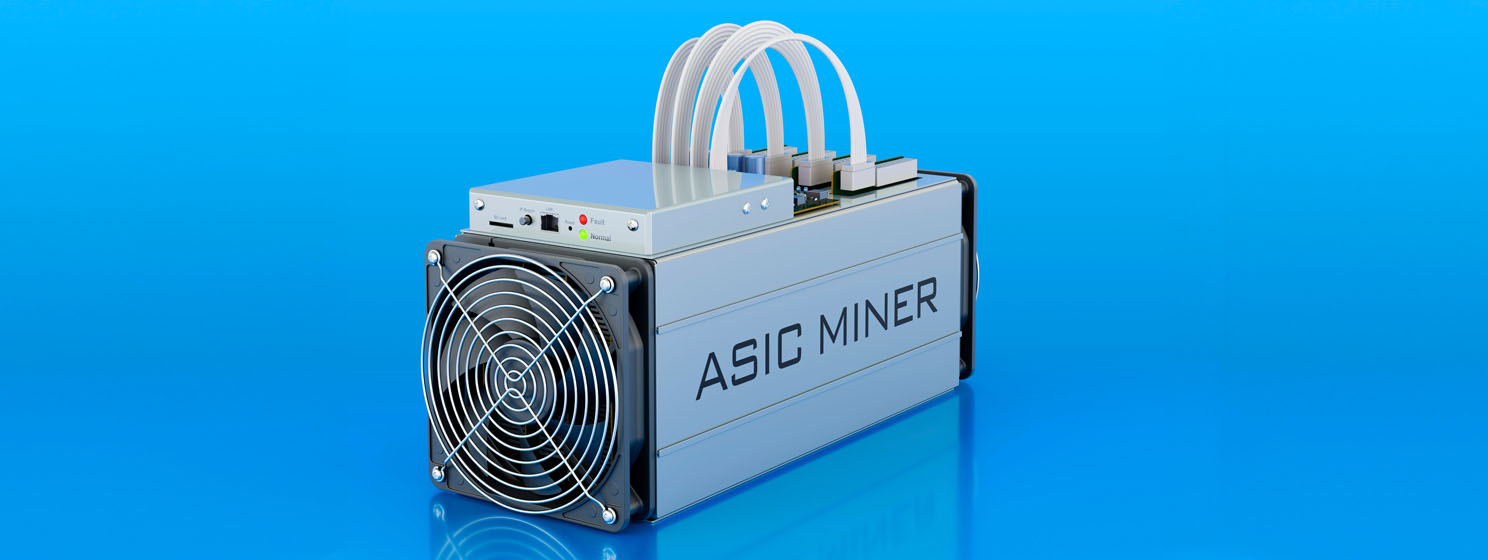|
Getting your Trinity Audio player ready...
|
America’s block reward miners are hoping Chinese ASIC manufacturers move swiftly on expanding U.S. production facilities because mining margins are currently thinner than Melba toast.
- U.S. miners’ market share growing, profits shrinking
- France is not ready to commit to state-run mining
- Russian miners not coming in from the cold
- Musk sued over AI data center pollution
- Bitdeer investors not wild about debt
JPMorgan (NASDAQ: JPM) declared this week that the combined share of the 13 U.S.-listed mining operators they track now accounts for 31.5% of the overall BTC network hash rate, a new all-time high (the overall U.S. miners’ share has been estimated at over 40%). The gains reflect the increasingly welcome climate for stateside miners since Donald Trump’s second stint as U.S. president began in January.
So much for the good news, the BTC network hash rate has dipped below 900 EH/s since June began but continues to hover near all-time highs, which is pushing up production costs. The overall cost to mine a single BTC—including the need to constantly replace/upgrade ASIC mining rigs to keep pace with competitors—is hovering just under $100,000, only a few thousand below the token’s current fiat price.
It doesn’t help that BTC transaction fees have dropped below 1% of total block rewards, a low not seen since January 2022. Simply put, most BTC transactions now occur on exchanges (trading BTC for other tokens or cash), offering zero benefit to miners, and the current mania for so-called ‘treasury’ companies to buy-and-mothball BTC isn’t helping.
In a recent interview with Cointelegraph, Zhibing ‘Tony’ Li, VP of Canaan Inc (NASDAQ: CAN), warned that miners “need to evolve beyond the traditional hash-per-dollar model. As block rewards decline and difficulty rises, mining will face a structural shift. Transaction fees will take center stage, replacing block subsidies as the primary revenue stream.”
That may be what miners need, but the current state of BTC offers no sign of this fee/reward flip happening anytime soon. Daily activity on BTC was struggling to stay above 300,000 transactions last week and has rallied only slightly this week.
Further complicating matters are the economic tariffs that Trump has imposed on nearly all other countries since he took office. With the leading mining rig manufacturers all based outside the U.S.—primarily in China and other Southeast Asian countries—the costs of importing rigs have taken a big bite out of U.S. miners’ margins. That latter category now includes American Bitcoin Corp (ABTC), the mining joint venture of the Trump family and miner Hut 8 (NASDAQ: HUT).
But relief may be on the way, as Reuters offered an update on efforts by the three largest foreign manufacturers—Bitmain, Canaan, and MicroBT, collectively responsible for over 90% of mining rig production—to establish U.S. bases of operation and ensure a steady tariff-free flow of ASICs to U.S.-based miners.
Bitmain began churning out rigs in the U.S. last December, while Canaan started a production trial in April. However, the company cautioned that there’s some hesitancy in going full-bore given the mercurial nature of Trump’s tariff approach. MicroBT has yet to announce any concrete plans but claims to be “actively implementing a localization strategy in the U.S.” to minimize tariff impact.
While this is music to most miners’ ears, U.S. ASIC-maker Auradine, which counts U.S. mining giant MARA (NASDAQ: MARA) among its investors, has been lobbying the government to impose tougher restrictions on Chinese firms to “strengthen national security in critical infrastructure.”
Shortly after Trump took his second oath of office, Auradine suggested “implementing rigorous compliance standards for imported technology” and mandating “cybersecurity assessments for foreign-made components in Bitcoin mining and electric grid management.”
For what it’s worth, Canaan’s biz-dev VP Leo Wang rejected this alarmist national security view, telling Reuters that mining rigs “are useless if not applied to Bitcoin mining.”
Regardless, Auradine urged the president to “expediently” reduce miners’ reliance on Chinese vendors “to ensure economic security.” Auradine also suggested “expanded incentives, such as tax credits or direct subsidies,” should be offered to U.S. manufacturers (the suggested duration of this proposed corporate welfare went unstated).
France rejects (for now) state-run mining
Miners rejoiced as Trump made good on his 2024 campaign pledge to loosen environmental restrictions on power generation to ensure America becomes “the world’s undisputed Bitcoin mining powerhouse.” As production costs rise, ensuring access to cheap and plentiful energy can make the difference between profit and loss.
Pakistan recently announced plans to reallocate its surplus energy—largely due to Pakistani households going off-grid by deploying cheap solar panels from China—toward mining BTC and powering AI data centers. Other countries have encouraged similar efforts in regions where power is plentiful and demand is slack.
But not every country is ready to hop on this bandwagon. France, which has an extensive nuclear power program that generates more power than the country requires, recently entertained a proposal in its National Assembly to study the possibility of devoting some surplus energy to mining BTC.
Despite the promise of the state generating additional revenue by launching a state-run mining operation, the proposal was rejected by the National Assembly this week. However, the rejection was not based on the proposal’s merits but on procedural grounds (the language was deemed overly broad and unrelated to the legislation it attempted to piggyback).
So this proposal may come up again soon, as France’s energy surplus isn’t going away. And without any other serious solutions on offer, why not choose a path that allows the country to generate revenue?Russia Russia Russia
Russia is a country that is lousy with gas and oil, but its creaky electricity grids are routinely teetering on the brink, so much so that the government has imposed both seasonal and geographic restrictions on BTC mining operations in recent years.
In February, Russia launched a mandatory registry for mining gear and ordered miners to report their earnings to the Federal Tax Service. However, the TASS news agency reported this week that only 30% of Russian miners have bothered to sign up for the registry, leading Deputy Finance Minister Ivan Chebeskov to quip that roughly two-thirds of miners need to be “cleaned up.”
Russia has attempted to deal with its recalcitrant miners by drawing up new financial penalties for failing to abide by the rules. This month, the Ministry of Digital Development announced plans to impose new fines of up to RUB 2 million (US$25,500) for companies and RUB 200,000 for individuals.
In May, Russia’s Ministry of Energy mulled offering registered miners incentives to relocate their operations to the country’s northern regions, where the sparse population offers greater grid flexibility. Deputy Energy Minister Yevgeny Grabchak noted that the region was dotted with power centers that once served oil production facilities, but these oil fields are now tapped out, leaving an energy surplus that he believed could be of use to BTC miners.
As Russia tries to rein in mining excesses, illegal mining operators are getting creative to frustrate the authorities’ efforts. Last week, TASS reported that authorities in the Buryatia region had busted an illegal mining operation being run out of the back of a tractor truck.
A routine inspection by local officials discovered 95 mining rigs hooked up to “a transformer substation capable of providing power to a small settlement.” Two suspects believed to be running this operation fled in an SUV. The authorities said it was the sixth case of “electricity theft using mining equipment” in Buryatia since the seasonal restrictions were imposed.
xAI slammed for passing gas in Memphis
A new study claims the electricity demands of AI large language models (LLMs) will account for 49% of global data center power usage by the end of this year, dethroning BTC miners as the preeminent power-hoovering technology. That said, since so many miners have ‘pivoted’ to the more reliable revenue streams that AI and other high-performance computing (HPC) tasks provide, they’re not exactly off the hook just yet.
AI’s insatiable energy demands have been credited with driving the rush by AI developers, including Amazon (NASDAQ: AMZN), Google (NASDAQ: GOOGL), Meta (NASDAQ: META), and others to sign nuclear power deals to ensure their LLMs don’t lose ground to more reliably-powered competitors.
Enter Elon Musk, who in 2021 famously halted customers’ ability to buy Tesla (NASDAQ: TSLA) vehicles with BTC due to the blockchain’s high energy demands and reliance on fossil fuels. Fast forward to 2025, and Musk is being threatened with a lawsuit for allegedly hiding the dirty energy powering his xAI LLM.
The Southern Environmental Law Center (SELC) filed a remarkable letter detailing its evidence of the more than two dozen allegedly unauthorized methane gas turbines in action at xAI’s ‘Colossus’ data center in South Memphis, Tennessee. The letter features aerial thermal imagery of the data center’s turbines, which the SELC claims are on pace to emit “more than 2,000 tons of smog-forming nitrogen oxides” annually.
The turbines were originally installed under what local authorities claim was a ‘364-day exemption’ from having to obtain the necessary permits. The SELC says these same authorities have yet to produce any documentation explaining the rationale behind this claim.
The letter gives xAI 60 days to rectify the situation—aka shut down the turbines—or the SELC will sue the company in federal court on behalf of the National Association for the Advancement of Colored People (NAACP) for violating the Clean Air Act.
Neither xAI nor Musk have yet to publicly respond to the SELC letter, but given that xAI is building a second, even larger data center in the Memphis area, let’s just say this was probably a really bad time for Elon to have had a very public bust-up with the fossil-fuel loving president.
Bitdeer borrows, investors punish
U.S. miners have been taking on significant debt of late as they try to (a) leap ahead of rivals’ ability to mine new blocks, (b) diversify their operations into data centers for AI/HPC tasks, and (c) buy BTC tokens for their treasuries.
After turning in a somewhat grim Q1 earnings report, Bitdeer (NASDAQ: BTDR) announced this week that it was looking to raise $300 million, then upsized that total to $330 million the following day, with a possible further boost to $363 million. The company said it will use the proceeds to pay the costs associated with raising new debt, expanding its data center operations, developing new ASIC rigs, and other general expenses.
Investors gave an emphatic thumbs-down to the news, pushing Bitdeer’s share price down from nearly $13 to $11.50 on Tuesday. The shares staged a minor rally Wednesday but ultimately closed down more than 7% to $11.80.
One can’t help but wonder if Bitdeer had, like so many of its peers, claimed that it was raising hundreds of millions of dollars in new debt to buy BTC that it would park in some cold wallet and hope for a major appreciation down the road, would its share price have risen? We suspect it would. If you wanted a more damning indictment of the overall mining sector, you couldn’t do much better.
Watch | Bitcoin mining in 2025: Is it still worth it?

 12-06-2025
12-06-2025 





